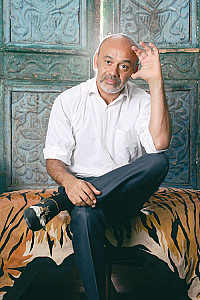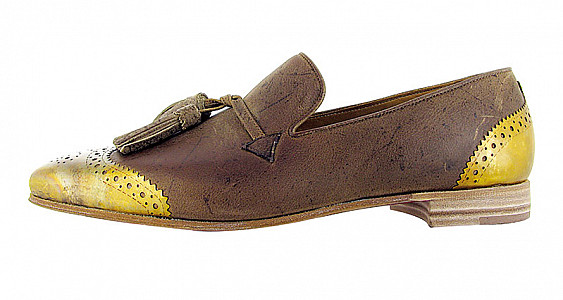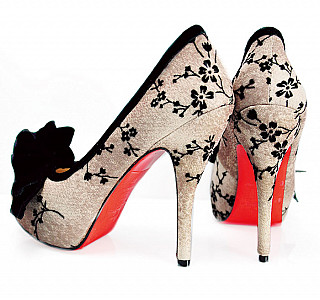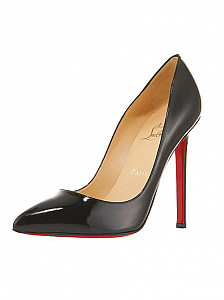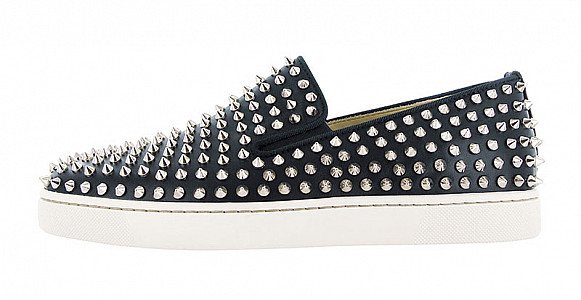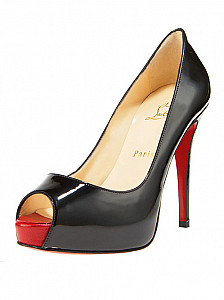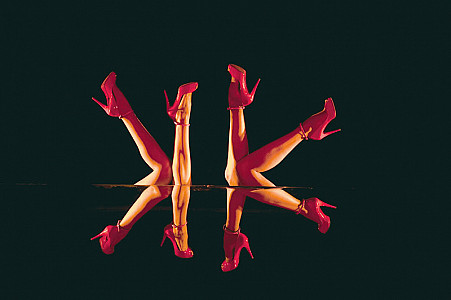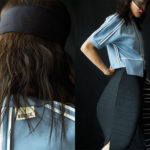Heel The World
Twenty years into business, how does one keep oneself young, refreshed and idealistic?
Collectively, the time may seem long, but to me, it’s like I just started yesterday! Time flew! When I started, I didn’t know anything about designing shoes, but I learned something new each day. It’s this learning that keeps me enthusiastic. I’ve never seen this as ‘work’; it’s not a regular time-bound job for me. I’ve given myself the freedom to explore various things, not just shoe design. I like working or collaborating with friends – the energy is different, it’s great.
In these two decades, what has changed in your way of viewing shoe design?
My earlier designs were very dressy, very decorative. Over the years, as I learned more about footwear design, my sensibilities matured. Now I like creating something more subtle – shoes which are not too dressy. Instead, there’s more focus on detail. The best example of this would be my nude pumps, which are made to give a ‘bare’ look, to blend with a woman’s skin tone. It’s meant to look ‘naked’, as though she’s not wearing any shoes.
The constant debate between stilettos ‘empowering’ women and its feminist counterpoints – how do you react to it now?
To each their own. If you do not like blue, choose green. If you don’t want high heels, feel free to wear flats. Everyone has the right to choose. I’m not forcing anyone; no one is obligated to wear stilettos. So I don’t see this as a debate anymore.
Have you ever tried on your stilettos yourself?
I tried on my stilettos just once. It was a very technical moment. I didn’t glance at the mirror to check how they looked on my feet. I was like a doctor examining if the heel was placed correctly and the pressure points were right enough. In my office, there are a lot of ladies who try on each sample pair, and based on their feedback, modifications are made if required.
When you design shoes, do you also visualise the ideal outfits with them?
No. It’s just a pair of bare legs in my head, to which I add the shoes.
Have you been inclined towards the very futurist, ergonomically ‘heel-less’ (but super high) school of design?
No, I don’t think on those lines. For me, the woman and her movement in the shoes she wears are very important. She needs to have proper balance. There’s a very traditional male side to me that asks – would I go out with a girl who wears those space-age looking shoes? Probably not. That’s why my designs are built on classic aesthetics, in terms of the structure.
When designing your men’s shoes, do you think of yourself as a muse?
Not at all. When I first came up with my men’s designs, they were inspired by two very different people – friends of mine. One was a pop star – the British singer Mika. I did shoes for a couple of his shows and that’s where I started. The other was a sportsperson, who had lots of tattoos and inspired a tattoo range that I did for men. There are two sides to the men’s shoes – a stage character and a more grounded persona.
You’ve collaborated with many creative stalwarts. What makes you click with someone?
Their enthusiasm. If someone is very passionate and enthusiastic about their work, then there’s a great drive that fuels the collaboration. But if they don’t share my level of enthusiasm, then it doesn’t stay an enjoyable process and gets boring. That is why I like doing projects with newer, younger designers – they have great energy.
Anyone you’re collaborating with, at the moment?
A young British designer called Mark Fast.
During collaborations, how rigid or flexible can you be?
I can be quite flexible, as long as the idea appeals to me and I respect the design aesthetic of those I’m working with. But for certain points, I have to stand my ground. It’s not a matter of ego, but of principle.
Give us an example of ‘standing your ground’….
In 1993, when I first created the red soles, I sent across my pieces to a store in New York, as per their order. But they asked me to remove the red soles, which I wasn’t ready to do. They were being adamant. That’s when I had to put my foot down and tell them that they were my designs under my label. So take it or leave it!
Now that your brand is a global giant, with stores across continents, do you ever miss the time when you were more niche?
I’ve enjoyed every phase of my life and career. When I was 20, I had a certain pattern which changed by the time I was 30 and which changed further as I grew older. I started out small and I liked it. When I grew, I liked that too. And now that my brand has grown to the point that it has, I’m very happy with this current phase. So no reminiscing nostalgically. It’s always about ‘now’, and going with the flow.
Did you study the Indian luxury consumer before venturing here?
Luxury is an inherent aspect here. It’s a very traditional Indian concept. The crafts, the bespoke traditions – they have all chanelled down from ancient times and a lot of these have been retained. People have very high standards of workmanship here, and a love for handcrafted items. Unlike many other countries, India hasn’t let its old crafts die, but preserved them very well. Craft and luxury run in the Indian people’s blood.
Is there a specific product or range that you’re targeting here?
There’s something that I’m planning to develop – a bespoke service that will craft bridal footwear, for weddings and functions.
What is sexy about the Indian woman?
The Indian woman is shaped with curves. Even the skinniest women here will have their curves. When you think of Indian women, you never think of bones and jagged angles. Even the sari, with is drapes, is a swirling, curvy outfit meant to complement her form. Nothing is sexier than roundedness and curves.
One of your shoe designs is called Bollywoody. Any favourite Bollywood films?
I liked Devdas (the Bhansali one) and Jodhaa-Akbar very much. More recently, I watched Guzaarish and thought it was a beautifully and artistically crafted film. Hrithik Roshan and Aishwarya Rai are both terrific actors.
Has your Indian store at Emporio, Delhi, shaped up according to your expectations?
Yes, very much. Emporio is a great place to have a store. I took a look at my neighbouring stores, and I was particularly interested in what the Indian designers were retailing. There’s some very high quality merchandise at their stores. It’s a good luxury environment.
Any other Indian cities on your retail plan next?
Maybe Mumbai; we’re still figuring things out. The next point doesn’t necessarily have to be in a swanky luxury mall. I would like to have a more boutique approach. Maybe a heritage space that has history, and a different ambience. That would be nice.
How has the response been to Feu in Paris? Word is that you choreographed it partly?
I didn’t choreograph it, but I was the creative director. So I was involved in several aspects of presentation. The response has been great, it’s still running. I like doing collaborations like this, they’re fun and get me recharged.
We hear that you’re a bit of a dancer yourself….
Well, let’s just say that I’m not good enough for the cabaret stage. Not just yet.
Related posts from Verve:
Verve Trending
Sorry. No data so far.
us on Facebook to stay updated with the latest trends

